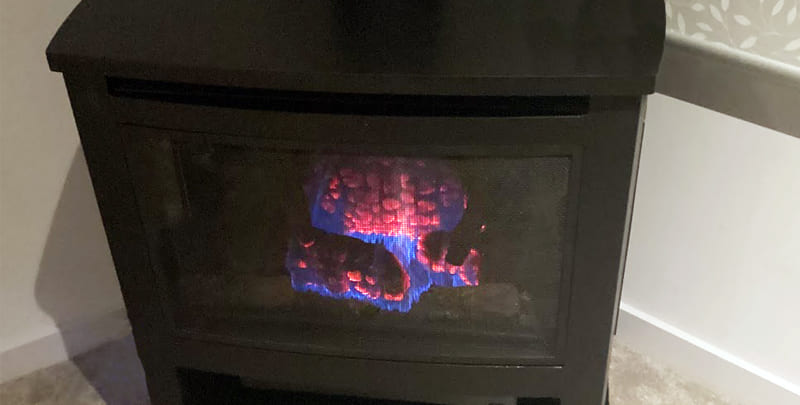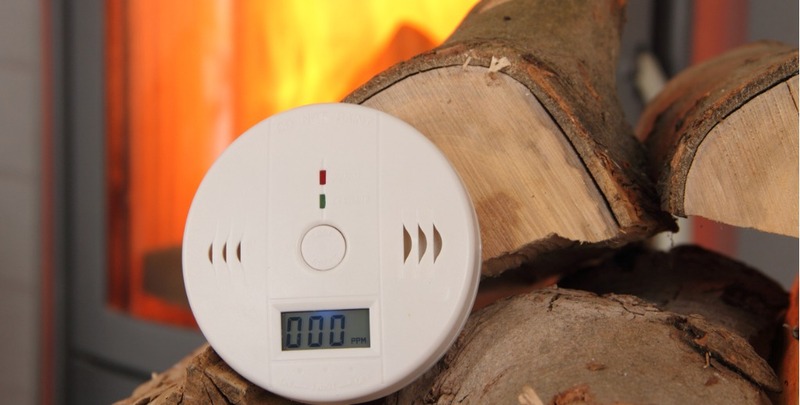
Everything You Need to Know About Gas Log Fires
When temperatures plummet outside, nothing beats the comfort and ambiance of gas log fires to warm up your living space.
With their modern designs, gas log fires not only keep the winter chill at bay, but also offer several other benefits. However, to ensure optimal performance from your gas log fireplace, it’s essential to consider a few factors.
Whether you’re considering installing a gas log fireplace or already have one, the information below can help you decide if it’s the ideal heating solution for your home.
Let’s take a closer look at the types, styles and benefits of gas log fires, starting with the origins of gas log fires.
How Long Have Gas Log Fires Been Around?
Gas log fireplaces have a long history that spans more than 160 years, with the first commercial gas fireplace being introduced to the market in the mid-1850s. Initially, these gas heaters were standalone and portable models. Gas fireplaces evolved into a popular alternative to traditional wood-burning fireplaces by the 1920s.
During the 1950s, the invention of the convector fire propelled gas log fires to new heights of efficiency and environmental friendliness. Compared to wood-burning fireplaces, gas fireplaces emitted fewer by-products, making them a better option for the environment.
With the ever-growing concern over climate change, gas fireplaces continue to be a popular choice for homeowners looking for an eco-friendly and efficient way to heat their homes.

Gas Log Fires are Convenient
If you appreciate the ambiance of a classic fireplace but you’re not keen on the hassle and upkeep that comes with burning wood, then gas log fires are the ideal solution for you.
Here are just some of the many benefits of gas fires:
- No wood necessary – Avoid the hassle of buying, storing, chopping and carrying wood.
- Energy efficient – Gas fires provide instant warmth at the touch of a button.
- Less maintenance – With gas fires, there’s no need to clean up ashes after every cold evening. Only a quick clean once a month is recommended.
- Complete control – You can use a remote control or a timer to conveniently regulate the heat and when you need it. The heat can be turned off just as quickly, providing greater flexibility with your heating choices.
- Fireplace ambiance – With a gas log fireplace you get realistic flames and the ambiance, the only things you don’t get are the sounds and smells of crackling wood.
It is recommended to have all gas appliances, including gas fires, serviced by a professional gas fitter annually. During the service, the gas fitter will thoroughly check all key components of the gas fireplace, including:
- The gas burner
- Thermostat
- Fan
- Venting
- Pilot light
This ensures the gas fireplace is functioning at its maximum capacity, venting correctly and not leaking any harmful by-products, such as carbon monoxide, into your home.
You can retrofit a gas log fireplace into an existing wood-burning fireplace or install it on the wall of your choice. However, if there is no existing chimney, installing gas fireplaces can be more costly.
Freestanding Gas Heaters
If you would prefer a gas heater that is not installed in your wall, perhaps a freestanding model is more to your liking. There are a number of reasons to consider a portable gas log fireplace, including:
- You don’t want the expense of wall installation
- You’re renting
- You’re considering moving house soon
- You like the versatility of having a portable model
This type of gas heater is simple to set up and maintain. You’ll find them in both flued and unflued options. Keep reading to find out more about venting options and what is recommended by the experts.
Self-contained, freestanding gas log heaters offer an excellent way to keep your home warm and cosy, but safety is paramount. To ensure the safety of everyone in your household, it is essential to use gas heaters only as intended and to follow all safety guidelines.

You Have a Choice of Venting Options
There are several venting options available that do not require a chimney. Choose between vented and vent-free systems, with the latter making considerable advancements in recent years.
Direct vent gas log fires are generally the safest choice. This is because they exhaust combustion fumes and other by-products through a small hole in the exterior wall or a chimney.
Natural venting, also known as B venting, uses a venting system or chimney to draw air for combustion and expel exhaust fumes through the roof. This also means existing fireplaces can be replaced with gas fireplaces.
Power venting, on the other hand, uses a fan-powered fixture to eliminate unwanted exhaust fumes through vents outside of the home.
Meanwhile, vent-free fireplaces are the most flexible option, but they release some exhaust fumes inside the home. Although generally considered safe, it could be harmful in small, poorly ventilated spaces. Some models come with a carbon monoxide monitor, but we recommend having a second monitor for safety purposes.
Vent-free technology has advanced significantly in recent years, according to Lennox Hearth Products development director Robert Dischner (on the Bob Vila website).
“Fireplaces use catalytic-converter technology, which cleans hot air as it leaves the combustion chamber,” he said. “Because of this technology, no chimney or venting is required.”
If you’re in the market for a freestanding gas fireplace, make sure you ask about catalytic-converter technology.
What Fuel Choices are There?
Like most other gas appliances, you can fuel gas log fires with one of two types of gas – natural gas and liquefied petroleum gas (LPG). Understanding the difference between the two is crucial before choosing the most suitable one for your gas fireplace.
Natural gas, despite being harmful to the atmosphere in its raw form, is a clean-burning and cost-effective fuel. It is less volatile than LPG and dissipates in the air, which reduces the likelihood of dangerous gas leaks.
However, if you do not have an existing gas connection, you will need to bear the additional costs of installation. It’s advisable to consult with local gas suppliers to determine the expenses you will face.
LPG, on the other hand, doesn’t need a connection to the gas mains. It is a by-product of the processing of natural gas. When stored under pressure, it condenses into a liquid form, which is used as fuel for gas log fireplaces and other appliances.
However, as LPG is more volatile than natural gas, it requires that you install your tank outside your home. You will also need to refill it regularly.

Hassle-Free Winter Warmth
Overall, gas log fires offer many benefits, including style, versatility, efficiency and cleanliness. Compared to wood-burning fireplaces, they are more eco-friendly, efficient, hassle-free and safer to use.
If you’re in search of a heating option that not only looks great but also keeps you warm during the big chill of winter, it is difficult to go wrong with a gas log fireplace.
For more information contact the specialists in gas fireplaces at Metropolitan Air Conditioning. We’re on call 24/7, every day of the year.
Please note: This information is provided for advice purposes only. Regulations differ from state to state, so please consult your local authorities or an industry professional before proceeding with any work. See our Terms & Conditions here.
Published: 2023-05-11

































